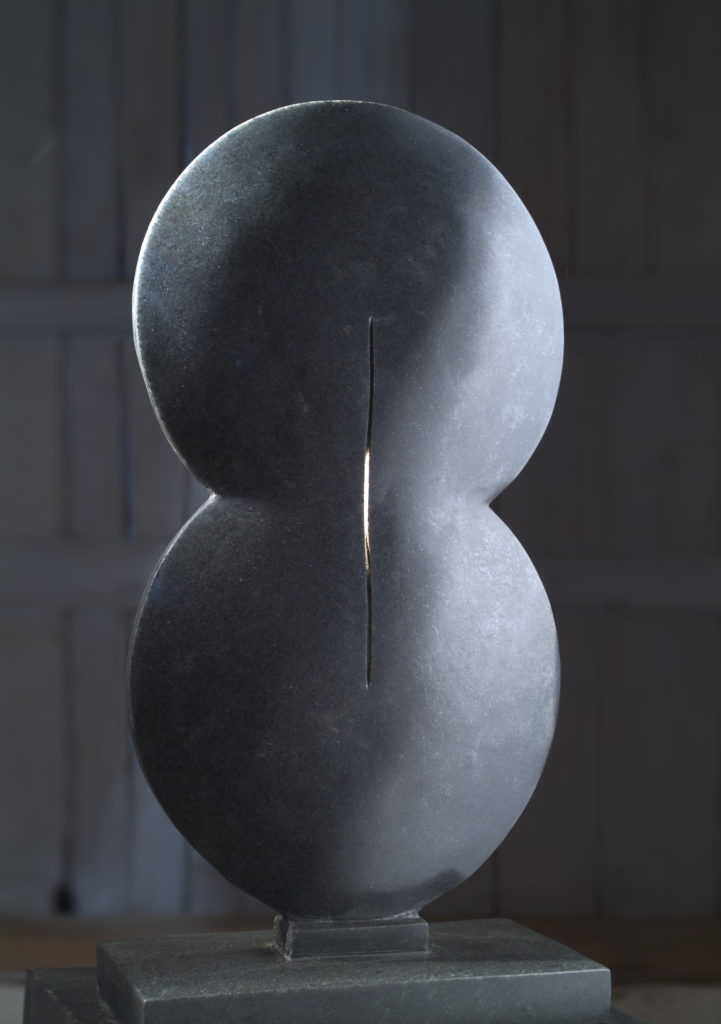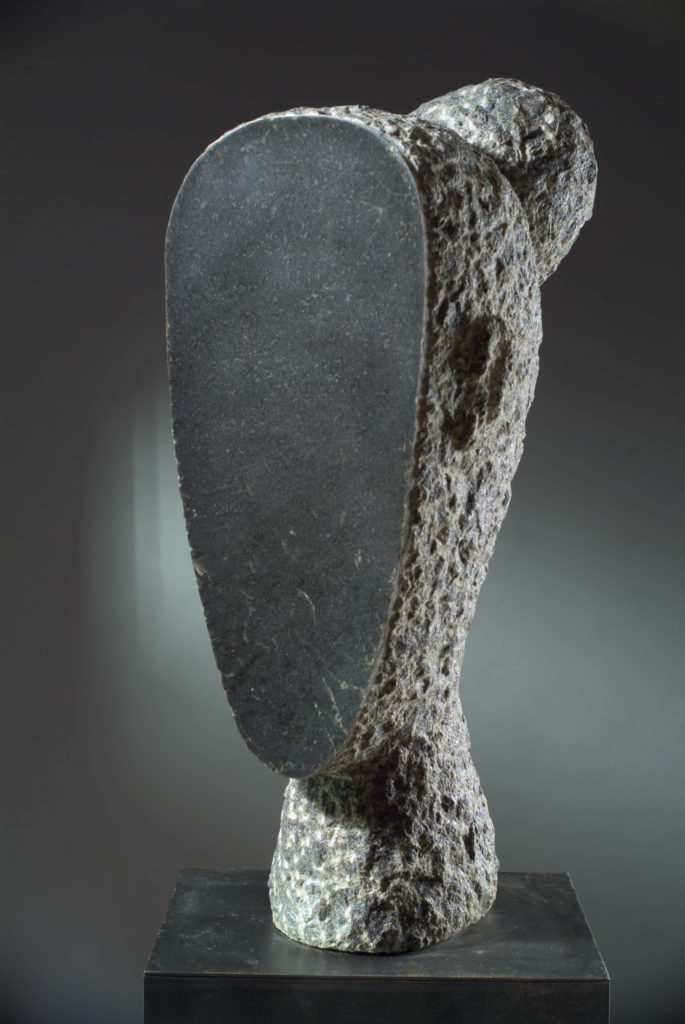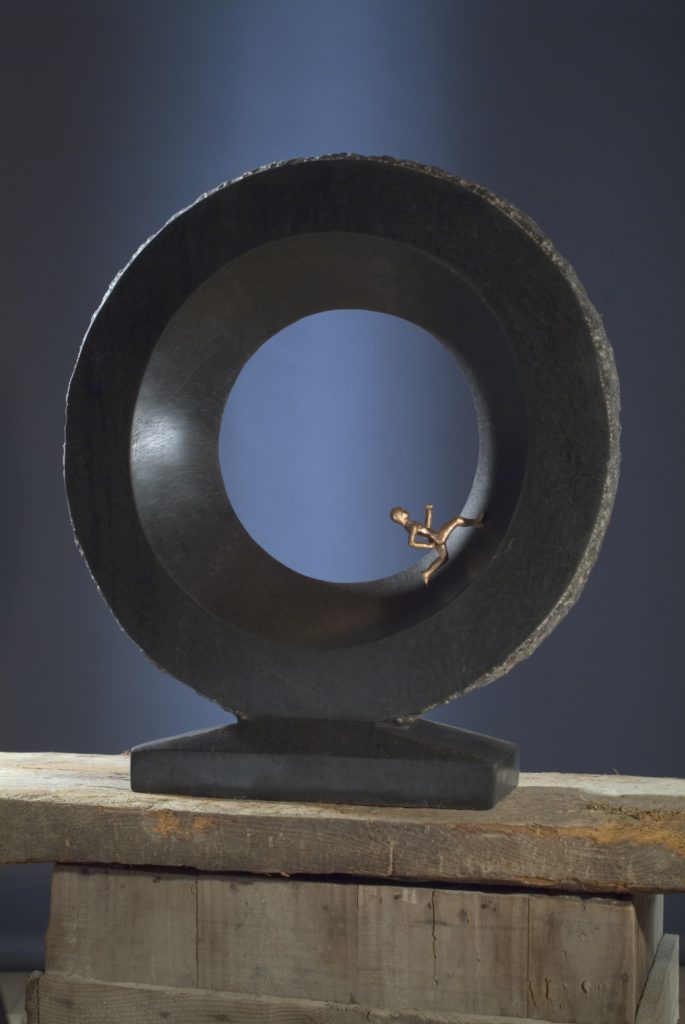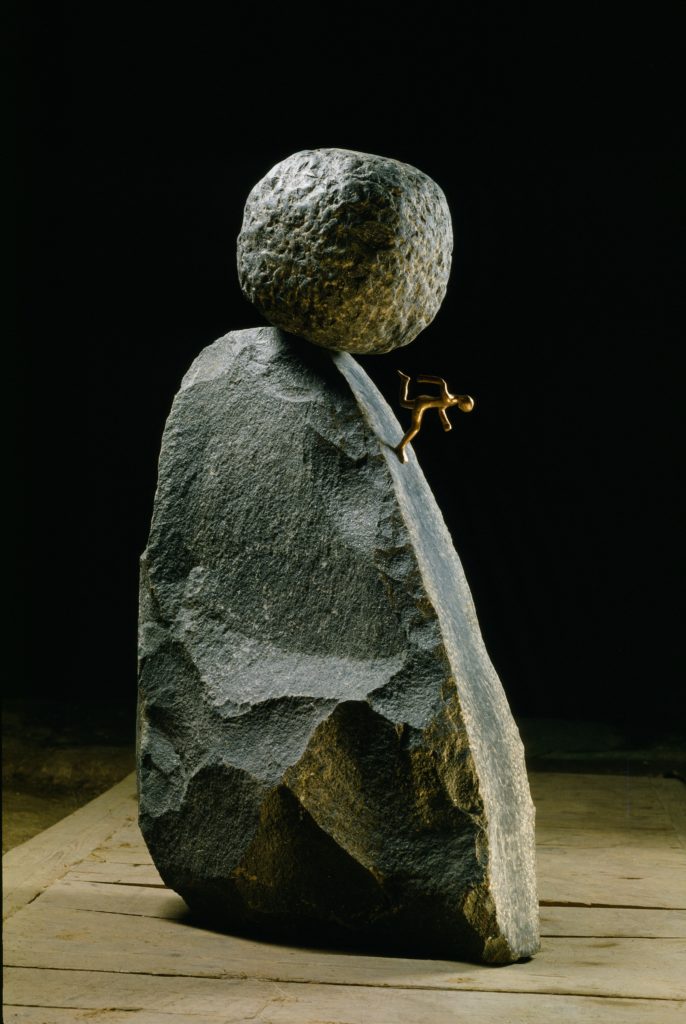19/07 2019 – 06/09 2019

Penetration, black granite, 2004. 63 x 31 x 25 cm, Photo: Ondřej Polák
Form and story – two aspects close to Petr Kavan’s (born 1949) heart. The artist’s wood, black granite and copper statues transform exhibition spaces into places where worldly stories and the sacred aura of temples converge. Kavan’s art was initially oriented towards carving, having acquired considerable skills from fellow Czech sculptor Pavel Kostrhun. These resulting wooden statues and puppets represent the first chapter of Kavan’s life as a professional artist, filled with stories and humorous anecdotes. In 1996, Kavan departed for India, discovering the magic of black granite in the town of Mamallapuram. This material would completely transform the Czech artist’s approach to his work. And in a wider sense, Kavan’s material – as well as his symbolic and artistic lexicon – was considerably broadened as a result of his stay in India. His works offer a space for a clash between Western thought and Eastern mysticism, primarily that associated with Buddhist and Hindu traditions. Kavan is thus both a storyteller and a philosopher, reflecting on life’s multitude of stories.

Women’s head, black granite, 2004. 70 x 27 x 30 cm, Photo: Ondřej Polák
The artist’s black granite statues represent a notable forward-step in terms of his expressive aesthetic – from explicitly narrative works towards almost metaphysically-coded anecdotes reflecting on human destiny. The works’ more abstract and clear lines serve to draw the viewer into a world in perpetual motion; a world constantly able to escape conscious comprehension; and, similarly to wise Zen masters, such comprehension can only be sensed, grasped or attained through a sense of elevated intuition.

Runner, black granite, bronze, 2004. 72 x 61 x 19 cm, Photo: Ondřej Polák
The central motif of Kavan’s works can be characterised as an encounter with one’s own corporeal nature, and an awareness of one’s own mortality – a sense amplified by the fact that the artist is stoically chiselling away pieces of stone or carving away pieces of wood. Works such as Dying Bhishma, and primarily Sisyphus, bring viewers into direct contact with the inevitability of human fate. The French philosopher Albert Camus considered the mythical figure of Sisyphus to be the first “absurd hero”, a metaphor for our wider collective fate. According to Camus, it is precisely Sisyphus’ ignominious downward walks, when he is free of the immense weight of this object, that the sufferer is confronted with the futility of one’s own acts, and when for the first time an opportunity for self-reflection upon the inevitability of fate is rendered possible.

Sisyphos, black granite, bronze, 2000. 105 x 57 x 24 cm, Photo: Martin Polák.
Kavan’s statues offer a similar opportunity to come face-to-face with the futility of one’s own existence. They underscore the fact that life is but a brief visit; borrowed time that one day we will have to return. A proper comprehension of such truths – a kind of surrender to fate – serves as one of the themes that Kavan’s statues so effectively mine. Additionally, cyclic concepts expressed by the artist reflect the Buddhist symbol of Dharma. Kavan incorporates a kind of existential essence to his works, serving as a confrontation with one’s own mortality, and offering a degree of relief to the viewer, stemming from the wider wisdom contained therein. His works can be viewed as a kind of journey towards Prajñā, meaning a Buddhist form of wisdom, and an understanding of the structure of reality, incorporating an intuitive comprehension of the Four Noble Truths. Similarly to Albert Camus’ Sisyphus, or an enlightened Buddha, a person examining Kavan’s works is also gaining reassurance in the face of the ubiquitous sense of anxiety and emptiness that haunts the cores of each of our beings.
MgA. Tomáš Hendrych
Curator of the Exhibition

